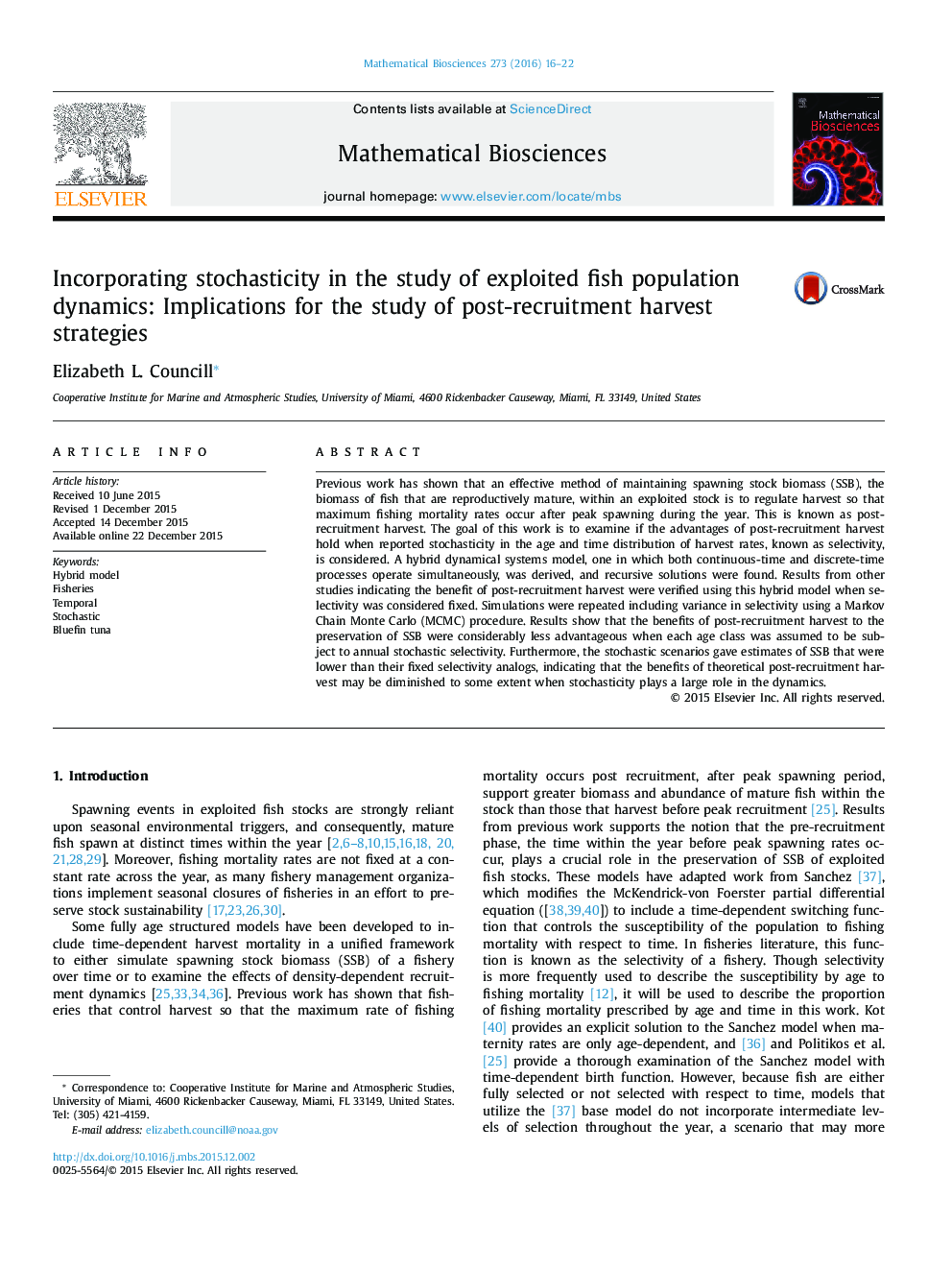| کد مقاله | کد نشریه | سال انتشار | مقاله انگلیسی | نسخه تمام متن |
|---|---|---|---|---|
| 4499921 | 1624007 | 2016 | 7 صفحه PDF | دانلود رایگان |
• Spawning stock biomass is higher when harvest occurs post-spawning than when harvest occurs pre- or concurrent with spawning events.
• The benefit to spawning stock biomass of post-recruitment harvest is diminished when high variance in the age-specific harvest rates are incorporated into the modeling framework.
• Stochasticity in age-dependent harvest rates can lead to unexpected dynamics, and the effects of inclusion of stochastic parameters in models of exploited fish stocks warrants further investigation.
Previous work has shown that an effective method of maintaining spawning stock biomass (SSB), the biomass of fish that are reproductively mature, within an exploited stock is to regulate harvest so that maximum fishing mortality rates occur after peak spawning during the year. This is known as post-recruitment harvest. The goal of this work is to examine if the advantages of post-recruitment harvest hold when reported stochasticity in the age and time distribution of harvest rates, known as selectivity, is considered. A hybrid dynamical systems model, one in which both continuous-time and discrete-time processes operate simultaneously, was derived, and recursive solutions were found. Results from other studies indicating the benefit of post-recruitment harvest were verified using this hybrid model when selectivity was considered fixed. Simulations were repeated including variance in selectivity using a Markov Chain Monte Carlo (MCMC) procedure. Results show that the benefits of post-recruitment harvest to the preservation of SSB were considerably less advantageous when each age class was assumed to be subject to annual stochastic selectivity. Furthermore, the stochastic scenarios gave estimates of SSB that were lower than their fixed selectivity analogs, indicating that the benefits of theoretical post-recruitment harvest may be diminished to some extent when stochasticity plays a large role in the dynamics.
Journal: Mathematical Biosciences - Volume 273, March 2016, Pages 16–22
